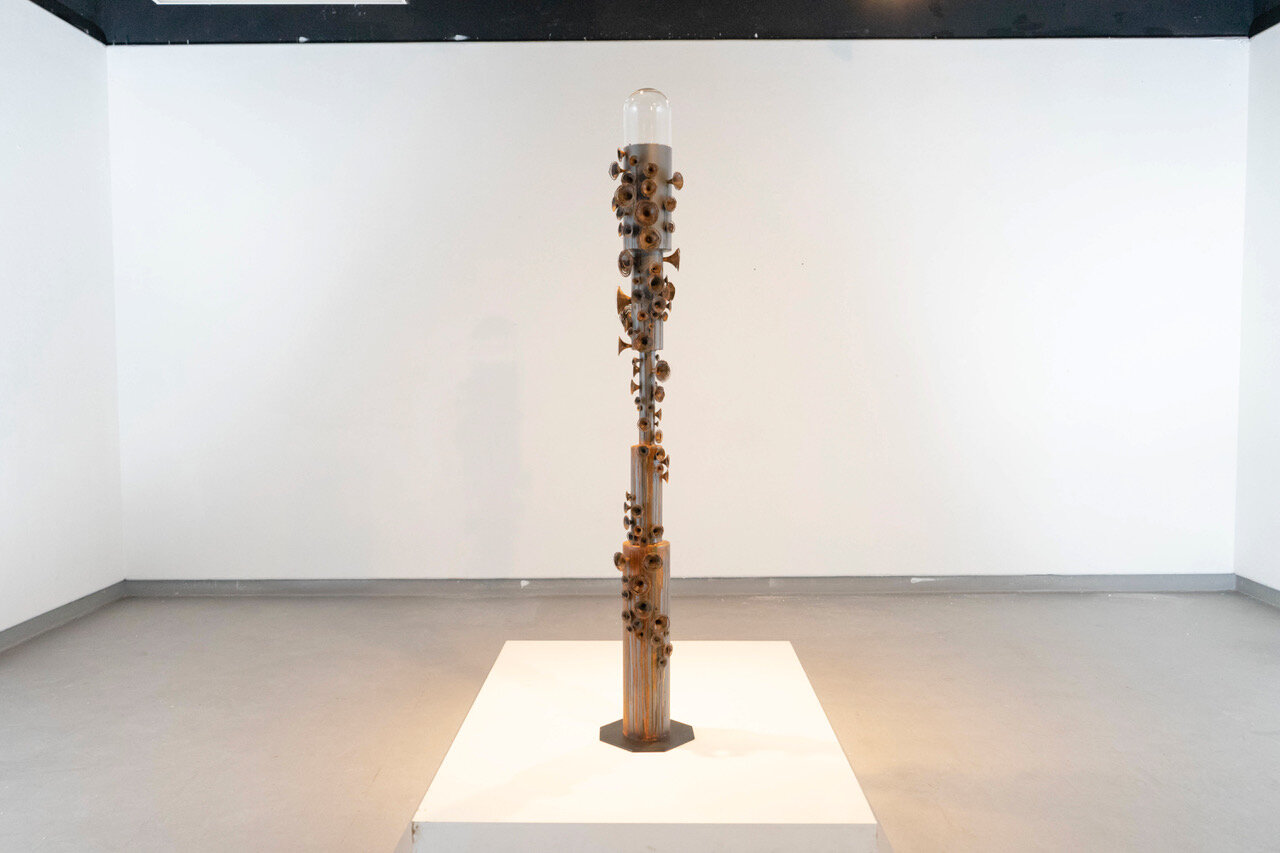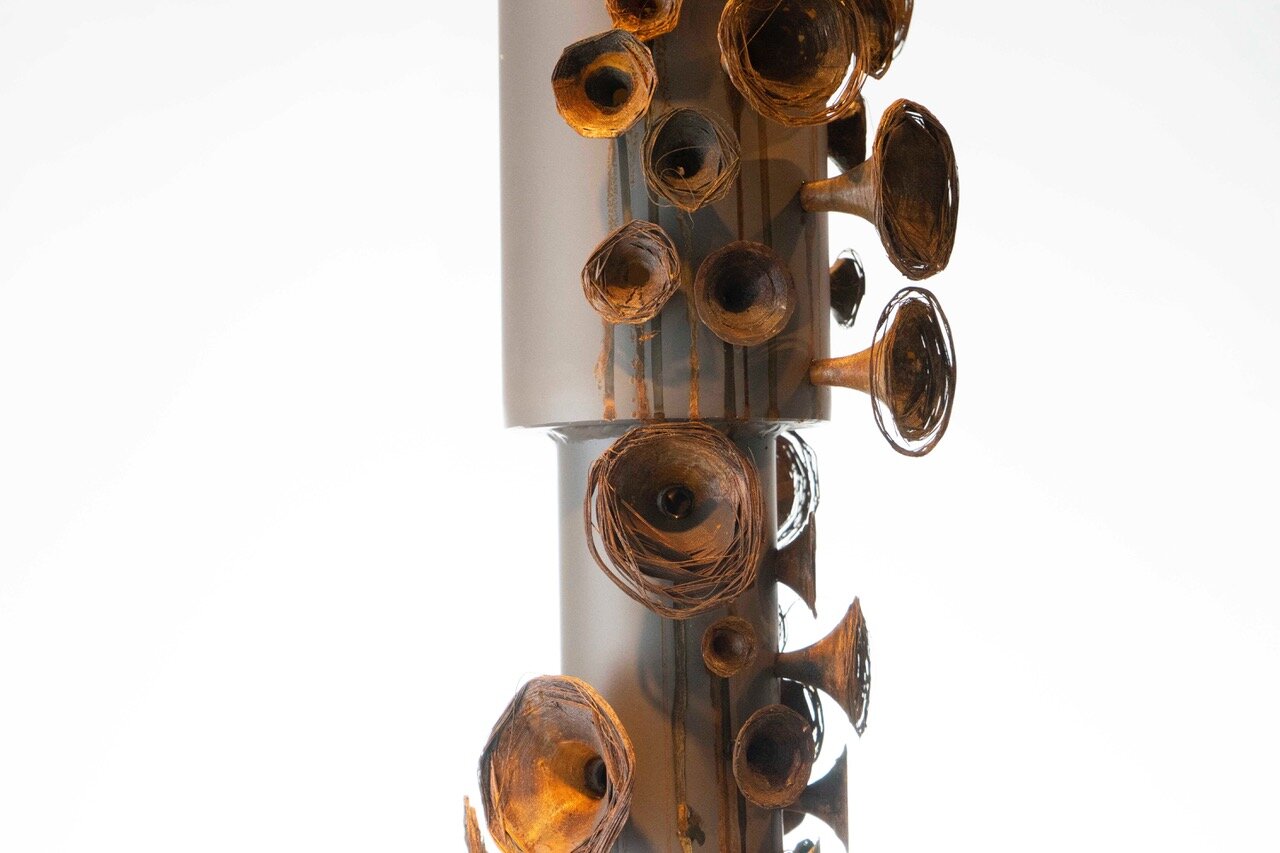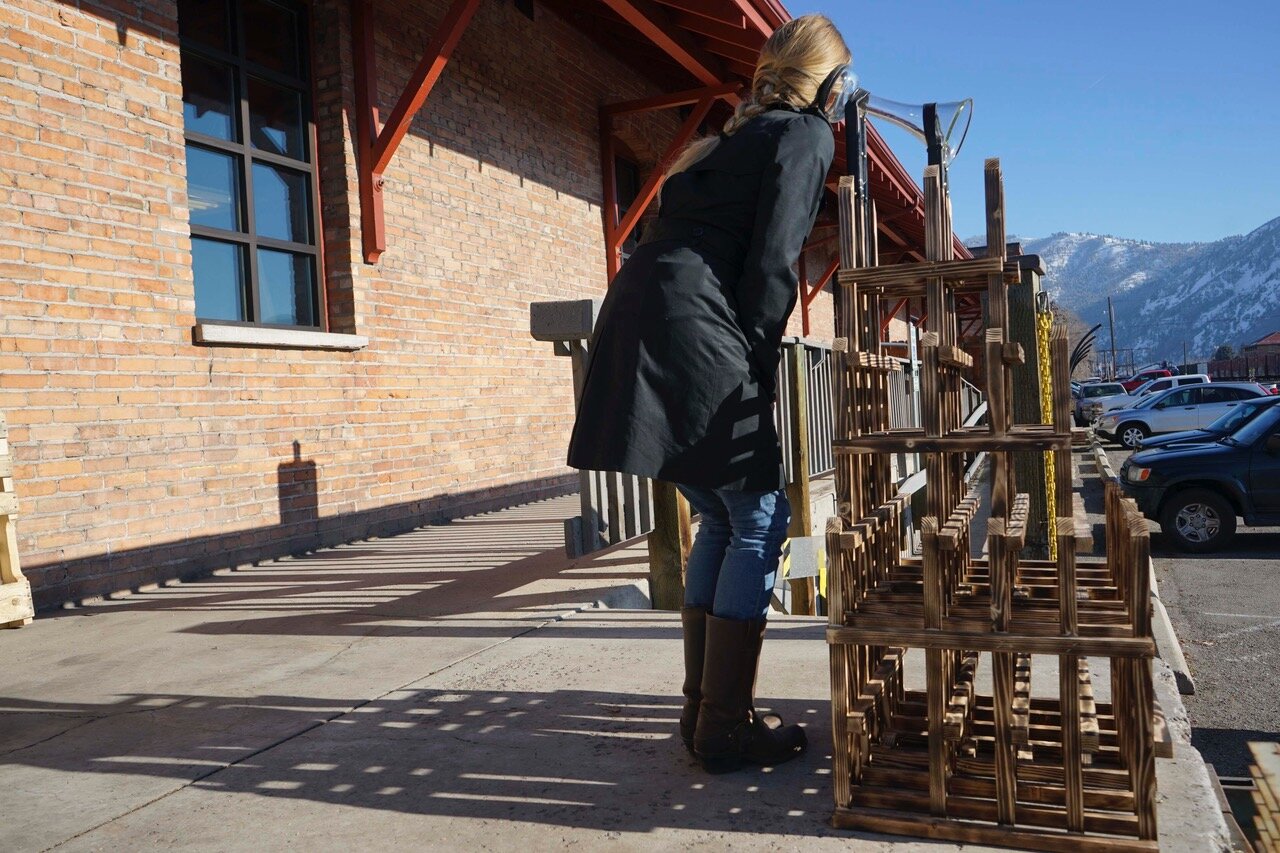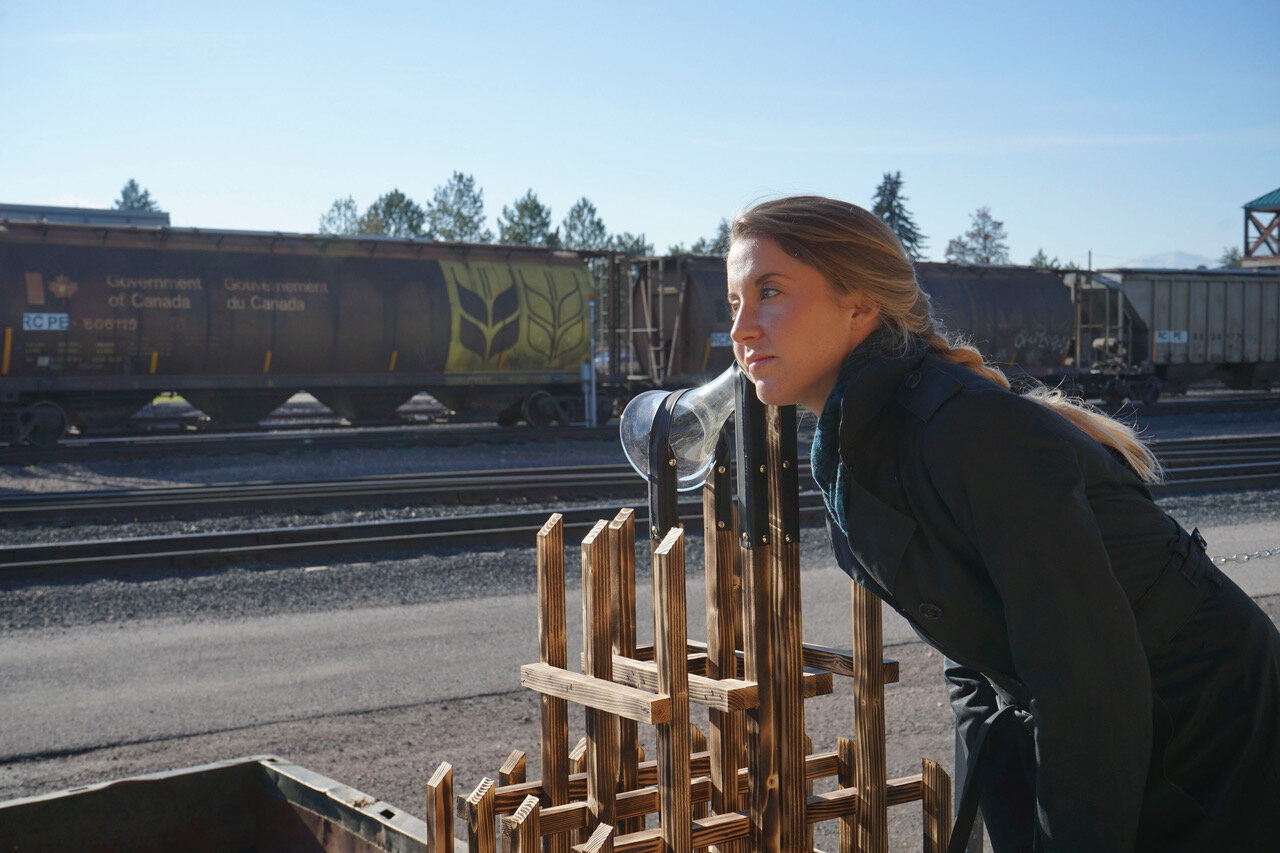Jesse Blumenthal
Missoula, Montana
Biography
Jesse Blumenthal is an internationally exhibited, museum collected Artist and Educator residing in Missoula, Montana. In 2019 Blumenthal’s work received a permanent collection purchase award from The Yellowstone Art Museum, was awarded a Montana Arts Council Artists in Schools and Communities Grant supported by The National Endowment for the Arts, and received four separate regional grants to support community based foundry events. Recent public sites have included Salem Art Works, Bozeman Sculpture Park, The International Conference on Contemporary Cast Iron Art, Sculpture in the Wild, and Open AiR. Jesse was raised in Montreal, Quebec, Canada and the NorthEastern U.S.. He attended UMass Amherst, earning a BFA in Sculpture in 2007, and completed his graduate work at The University of Montana, earning an MFA in 2019.
Jesse’s studio work explores the Anthropocene by reflecting on the strains of the spaces between Man and their Environment. As an artist living in the west for the majority of his adult life, his recent work explores industrial materials and consumer technology in interdisciplinary arrangements that reflect on the natural environment of his mountain home. The clash of the natural represented within the inherently processed human material creates an ironic tension in the work that can be witnessed throughout the landscape of the industrialized west.
The high mountains of Southwestern Colorado were home base for both studio and community based art practices, rooted in the industrial arts, for almost a decade before moving to Montana in 2016. Embracing opportunity for community engagement, through the opportunities working in industrial material offers, has broadened the reach and accessibility of Blumenthal’s practice. The open inclusion of participants into Blumenthal’s artistic practice references contemporary political topics such as capitalism and socialism, social topics based around community and accessibility, and artistic movements such as Relational Aesthetics, Fluxus, and Immersive/Participatory Events.
Artist’s Work


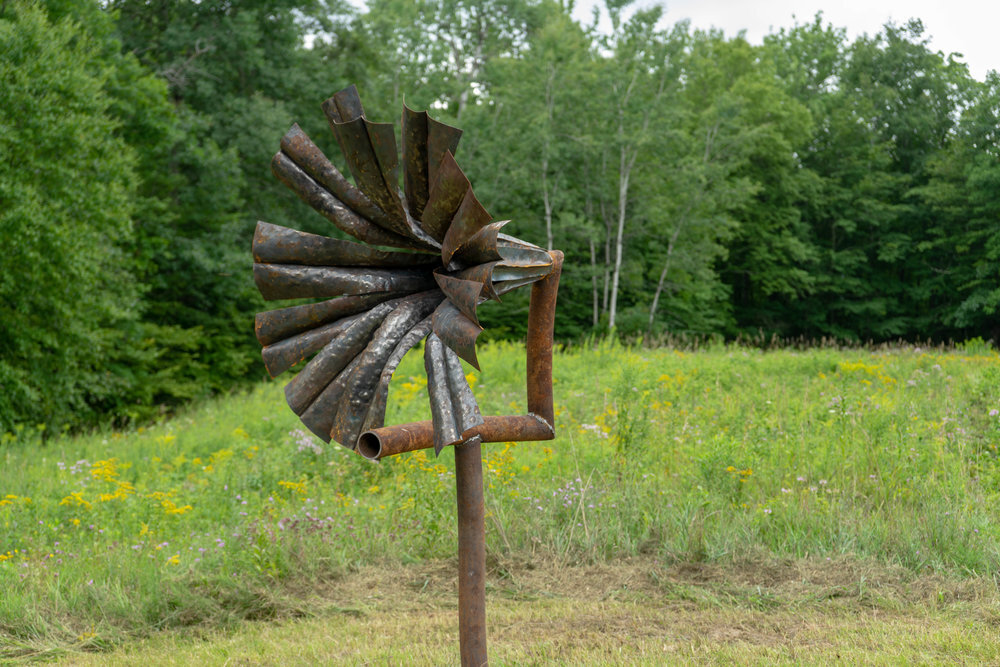


Building a Forest
Jesse’s Tree Concept
Hearing Aid 8
Hearing Aid 8 is a steel and wood paneled stump form that creates a sonic gathering place amongst the trees of the Black Rock Forest for Burning Man 2021. Oxidized pentagonal steel horns stud the exterior as fungal growths and allow for the trunk of the stump to gather soundwaves from the environment. The two branches of the stump act as anthropomorphic arms to gather further sound through their large, flared horn ends. These six foot tall horns provide gathering space to experience the sounds of the playa and its participants while contributing to the sound Hearing Aid 8 is gathering. The waves all collide and provide the sonic ecosystem the participant experiences within the core of the stump (accessed through a five foot pentagonal opening in the front of the sculpture). Participants will also be able to use the fungal horns to access resting points atop the branches and a nest in the top of the hollow tree. These places of shifted perspective will allow participants further opportunities for observation and reflection.
Philosophy:
The sonic ecosystem is a series of sculptural works which employ sound, and transmission signals, as physical manifestations of environment. The intent of the sonic ecosystem is to foster a sensitivity to our place, in human and non-human function, and to promote deep, topical thought and conversation. The sonic ecosystem points to environment through direct interpretation of the definition. While the signifiers of stereotypical environment are there (natural and anthropomorphic forms), the environment that is built through sound waves and participants’ actions results in a direct sonification of specific architectural space.
The horn has allowed modified sound in a “passive” manner. The horn is more than a recurring geometric shape in this work. The form of the hollow cone as an amplifier is an ancient technological development akin to the circle being used as a wheel. When thinking about the history of consumer sound products, the gramophone struck me as a ubiquitous and beautiful product. From engraved wax cylinders to vinyl, this listening device introduced recorded sound as an in-home entertainment device during the Industrial Revolution. How this isolationist device has shaped the material history of the horn shape, and particularly the scalloped and flared bell of the gramophone horn, was an essential formal departure point for this body of work. Including acoustic forms such as the horn in this show was a way to retain the authenticity of the material of sound. I am looking to manipulate the physical properties of sound waves in the environment. I think of this process as “pushing sound” through space. Other forms that act as a vessels for sound in this ecosystem are stumps.
As a stone sculptor, I am aware of the art historical and structural significance of the stump. In historic figural sculpture, a stump was often used to better support the narrow, weak ankles which the stone medium could not handle. This propping of the human element by natural elements, even in ancient works, implies that we are supported by the natural even as we attempt to control it (into sculpture in our own likeness). Having suffered an ankle injury which has left me with a permanent partial disability, the stump as a prop for the ankle also plays into my personal history. Outside of the personal and obscure historic reasons for the stump are the obvious formal associations of a stump in a western landscape. The stump suggests logging and the view that nature is a resource to be extracted for the benefit of man. Because the extraction industry is also a signifier of industrial progress, to the environmentally conscious, this can carry a negative connotation. To the conservative, the extraction industry acts as the economic backbone of the industrialized American West.
The sonic ecosystem seeks to develop a sensitivity in the participant to the physical presence of sound waves, radio transmission, electricity, and magnetism in their environment. This system is an open sonic interface defined both by environmental input and spatial characteristics. As a person walks through/amongst the objects, the soundwaves of the space are consumed, and then repeat until dissipating through the diminishing return of the feedback loop system. I went to extreme lengths to remain analog so the system is simply repetition, interaction, and dissipation of physical waves and not a coded process. Throughout the sonic ecosystem sound and transmission waves are acknowledged as physical elements that can then be manipulated as art materials. I want this way of working to bring viewer/participant awareness to the omnipresence of the many types of transmissions that pass through our everyday environments in an electrified post-industrial society.
Ecosystems imply both energy exchange and consumption. The properly functioning system exhibits states of narrative; the boom/bust states of rapid unforeseen change in the story arc of the ecosystem’s environmental loop mimicking those of the extraction economy. Anthropomorphic forms and figural scale sculptures help the participant to visually relate and further implicate themselves in the ecosystem.
